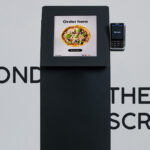Published by
An often neglected facet of customer experience is employee experience.
The food hospitality sector has been tested to its limits in the last two years, as the COVID-19 pandemic and its reverberations in multiple industries continue to affect disposable income and dining experiences. As real wage growth outpaces inflation and ingredient costs continue to jump, hospitality businesses are understandably concerned. Not only that, but it’s becoming increasingly clear that the restaurant business model of the past will not return, and a new normal, with differentiated expectations around fulfillment channels, will emerge.
But all is not lost; pent up consumer demand should provoke industry sales of almost $898 billion this year, assuaging pressing doubts about restaurant success and enabling businesses to refocus on how best to emerge from inflation insecurity unscathed.
Yet restaurants continue to focus on managing the costs of inputs.
The answer: employee experience.
A permanent reduction in workforce, sporadic COVID-19 cases, and increasing quit rates continue to impact units across the country. In fact, 70 percent of restaurant operators do not think they have enough staff, and around half see it as their largest hurdle in 2022. In December, the quit rate in restaurants reached over 10 percent, leaving restaurants to wonder what they’re doing wrong.
Of course, customer experience (CX) is the name of the game for hospitality companies, as the competition heats up to draw consumers back in post-pandemic. But an often neglected facet of CX is employee experience, even though it should be a no-brainer for any consumer-facing brand.
When creating, testing and launching new experiences for a brand, the forward-thinking business leader will cover all bases, ensuring that not only are digital experiences effective at the point of the customer, but also at the other end of the transaction chain: at the point of the employee. But if experience-led transformation for employees is the key to improving retention in 2022, what should be on a business’ list of priorities?
Tech to the rescue
Imagine if companies spent as much time thinking about how to make their employees’ jobs easier as they do for making customer interactions more seamless. After all, for full-service restaurants the team member they interact with will be the most salient part of their brand interaction. It doesn’t matter if this team member is running a curbside order or serving a table, they are the brand’s representative. Digitizing key elements of the employee journey can drive up to a 17 percent time reduction in manual processes, 5 percent incremental revenue growth over three years, and increased team retention and higher overall organizational profitability.
Full-service restaurants of the future will have a place in the dining mix, but they will also need to make it easy at key points, such as checkouts. Utilizing mobile point of sales for peak-time ordering (mPOS) enables teams to manage financial transactions in a really versatile, simple way.
Organizations should incorporate digitization into the ordering process, to improve efficiency. This will make a real difference to the customer’s experience, cutting down on waiting times and improving accuracy. Moreover, by digitizing key touchpoints in the customer’s ordering experience, full-service restaurants can collect valuable data on order sizes, item popularity, payment and time preferences, and paint a clear picture of the most loyal of customers. If surfaced at the right time, this information does not only improve the customer’s in-app experience, but also the employee’s, in their interaction with the customer. If surfaced effectively, employees will be empowered by having all of this information at their fingertips, as they are trying to surprise and delight whoever makes their way to their table.
Good training is priceless
First, learn about what your full-service restaurant employees need to be successful and focus on the research. 70 percent of restaurant employees say that they need more hands-on training from managers, with 62 percent stating lack of training as the main reason for wanting to leave their job. Of course, a company can have all the digital functions in the world, but without the proper on-boarding of staff onto new systems, employees will end up feeling helpless when serving customers. Also, the customer’s experience will feel inferior. If you have recently been to Chick-fil-A, you will have noticed that their employees are happy. And this is because they receive the support needed in their technology and back-of-house systems training. While it may seem counter-productive to focus so heavily on employee experience when there are customers to impress, there is no doubt that the smooth use of systems by trained, knowledgeable employees will only improve customer satisfaction.
It is especially important to involve employees in implementing new systems. A key mistake often made by businesses is attempting to build an employee experience in a vacuum, without allowing for collaboration or the gathering of thoughts and feedback. When designing their loyalty digital program, Marks and Spencer (M&S), reached out to 40,000 M&S employees for input on their design and testing. The success of the program, which was joined by 7 million users, didn’t only lie with the right data and digital capabilities: employees’ input was a key differentiator. This proves that employees should be acutely involved in creating new digital experiences for customers. Moreover, full-service restaurants should consider developing an employee-based version of a customer digital experience. By crafting this new digital interaction, staff can engage with and learn to promote the customer program, ultimately driving customer lifetime value.
The bottom line: you are valued
More than half of restaurant employees say that they would like to receive paid bonuses as recognition from managers, with over 60 percent feeling that a promotion would increase their happiness in the workplace. It is important to show employees that they are valued, and therefore increased compensation for staff must be a top priority for full-service restaurant owners. Also, consider other perks that drive employee happiness and satisfaction. Team building activities and events will help staff develop a sense of kinship and establish a good company culture. This is especially important as customer service workers are often a target: 62 percent of workers report putting up with disrespect from customers. Building a supportive environment and a good company culture will see people and full-service restaurants thrive in equal measures.
Employees are the glue holding day-to-day full-service restaurant operations together, so equipping teams with the correct training and tools across different units will ensure that a brand keeps customers engaged, and provides them with a adequate service. Businesses should focus on extensive training and regular updates for employees, as the digital experience evolves. If employees are left behind while the digital capabilities of businesses move forward, the imbalance will affect customer experiences. In a post-pandemic, intensely competitive economy, full-service restaurants should rethink their employee experience, and curate supportive environments to drive greater staff retention and stay ahead of competitors.
Share:
Categories
tags
Related Posts


The Great Big Budget Cut: Prioritization


